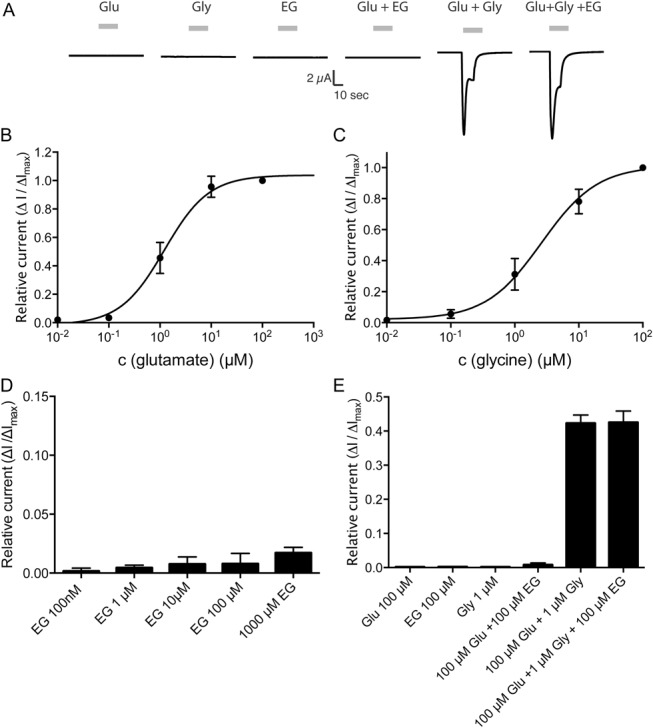Figure 3.

N-ethylglycine (EG) does not influence NMDAR-mediated currents in Xenopus laevis oocytes. Xenopus laevis oocytes were injected with complementary RNA encoding for mouse. Substance-induced currents were recorded with the membrane potential held at −50 mV. The respective substances were applied for 15 seconds each followed by a washout of 30 seconds. (A), Representative substance-induced currents for 1 μM glutamate (Glu), 2 μM glycine (Gly), 100 μM EG, or the indicated coapplications EG were recorded from oocytes expressing the NMDAR (NR1/NR2a). (B), Concentration/response curve of currents elicited by glutamate in the presence of saturating concentrations of glycine (100 μM) normalized to maximal glutamate inducible currents as determined on oocytes expressing the NMDAR (NR1/NR2a). Data are expressed as mean ± SEM (n = 4-6). (C), Concentration/response curve of currents elicited by glycine in the presence of saturating concentrations of glutamate (100 μM) normalized to maximal glycine inducible currents as determined on oocytes expressing the NMDAR (NR1/NR2a). Data are expressed as mean ± SEM (n = 4-6). (D), Oocytes expressing NMDAR superfused with EG at the indicated concentrations in the presence of saturating concentrations of glutamate (100 μM). Substance-induced currents were given in relation to the maximal glycine-induced current (determined after superfusion with 100 μM glutamate and 100 μM glycine). Data are expressed as mean ± SEM (n = 4-6). (E), Oocytes expressing the NMDAR (NR1/NR2a) were superfused with glutamate, glycine, or EG at the indicated concentration alone or in the indicated combinations. Currents were determined as fraction of the current elicited by glycine and glutamate (100 μM each) alone. Data are expressed as mean ± SEM (n = 4-6).
